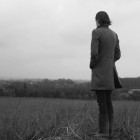About
Soon off to Roehampton University to study Photography, I'm 18 and currently studying hard for my A levels. I've got a healthy social life yet do love some time alone outside with my camera. I enjoy exploring metaphorical concepts, with my images expressing personal deeper meanings that can be reflected differently for others. I'm interested in the field of art therapy, which may be my choice of a Masters if I'm still interested in that in three years time. I have a lot ahead of me, with art and design being my desired future.
Works

When first independently exploring photography, I wasn’t entirely aware of all the forms, processes nor creative techniques, yet I was constantly out and about with a camera in hand. Despite being in quite an urban city, I love nature - the concept of man-made objects around us being crafted to perfection, but never being as beautiful as natural objects, intrigued me and led me to visually display it.

Further independent exploration for the concept of contrasting beauty between natural and artificial objects.

With a focus still upon crafted natural and artificial beauty, I looked towards how artificial objects can be crafted to have beauty, as well as a metaphorical and physical purpose. This further extended my question to, how much purpose do natural objects of beauty have: to simply display philosophical ideas about a theistic aesthetical argument? Or is there more to it?

Despite nature’s aesthetic beauty, compared to artificialities’, is evident, what can be questioned is their practical purpose.

‘I caught her when unaware, gazing into the distance with a relaxed expression, but the fine details of her freckles and eyes, her jumper and hair; the grey tones and exposing light adding to the simplistic beauty, it all worked so well together.’ I removed her expressive eyes to begin investigating enigmatic thoughts.

“When you photograph people in colour, you photograph their clothes. But when you photograph people in black and white, you photograph their souls.” – Ted Grant

His physical appearance and context of attire are exposed, however his thoughts and intentions from lack of expression remain mysteriously unknown.

Polaroids typically represent ‘vintage photography’, however digitally manipulated images to become Polaroids? Another thing all together. Does this make it more of an art form?

“Self-portraits…reveal so much about the thought process and emotions that go into an image. I am able to re-enact a concept exactly as I imagine it.” Kyle Thompson’s surreal conceptual photography introduces the benefit of self-portraits, and his surrealist approach adds a mystery that I wish to capture (interpretation from the influence of Thompson’s Untitled taken on January 20th 2013).

Distractions draw you further away from enigmatic thoughts, such as attire and surroundings. Blank expression is used, with the technique of sfumato, which leaves the key features of the face indistinct, hence emphasising the obscurity.








